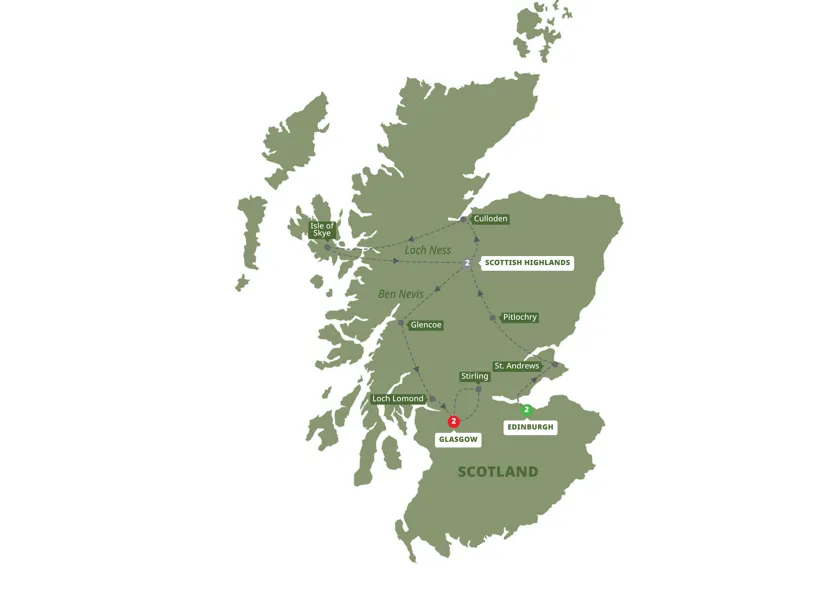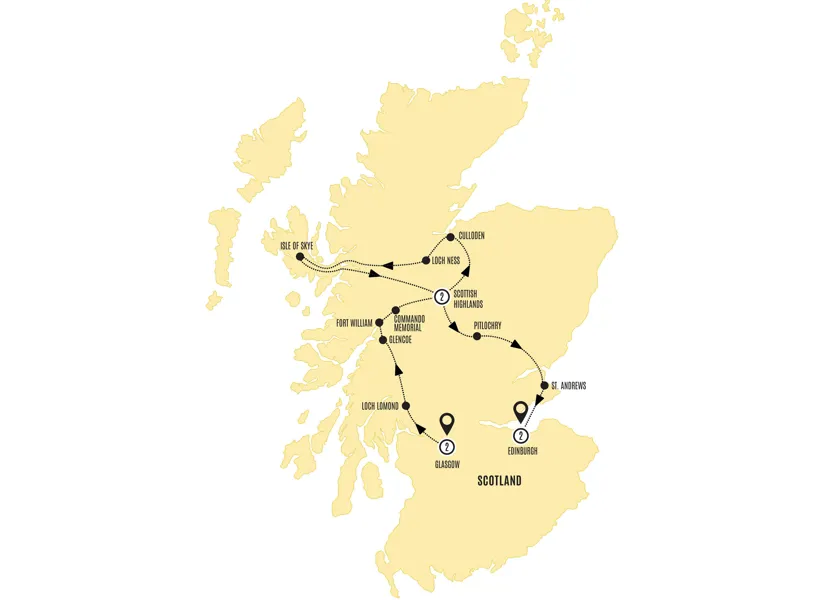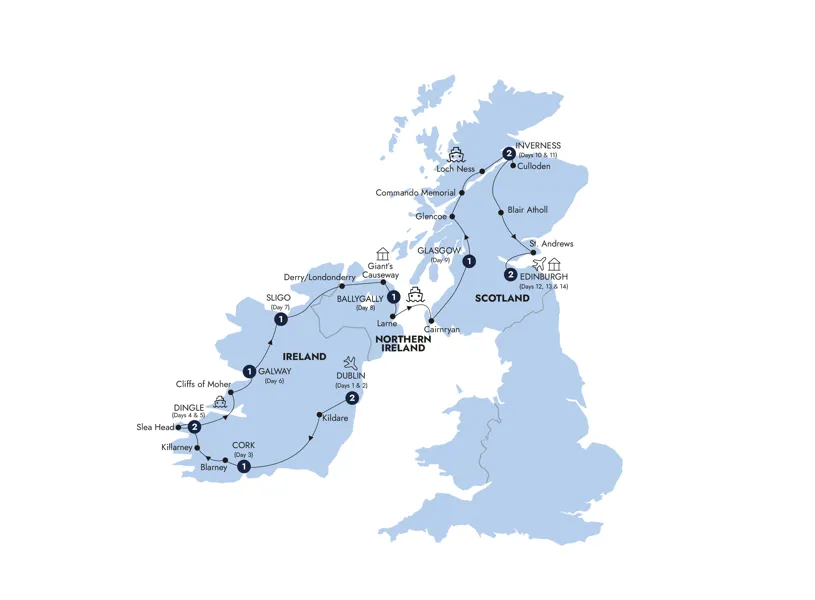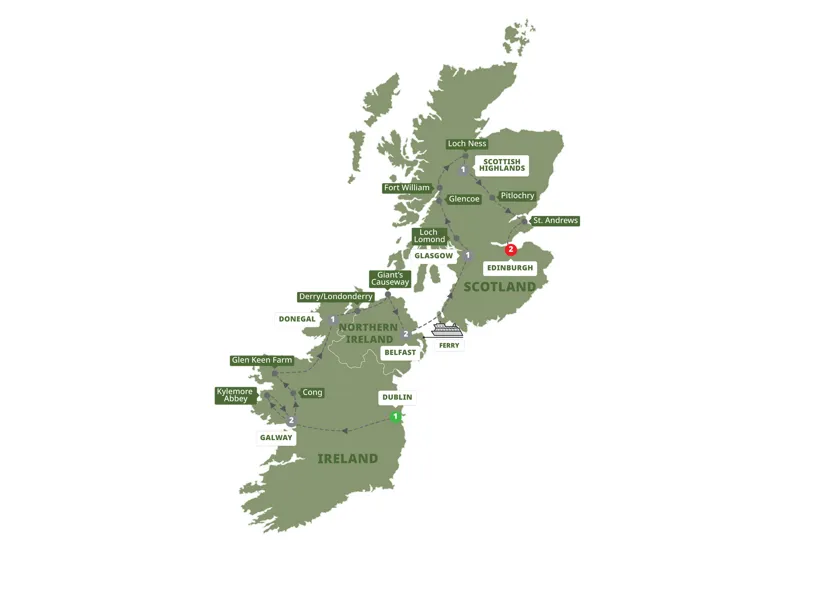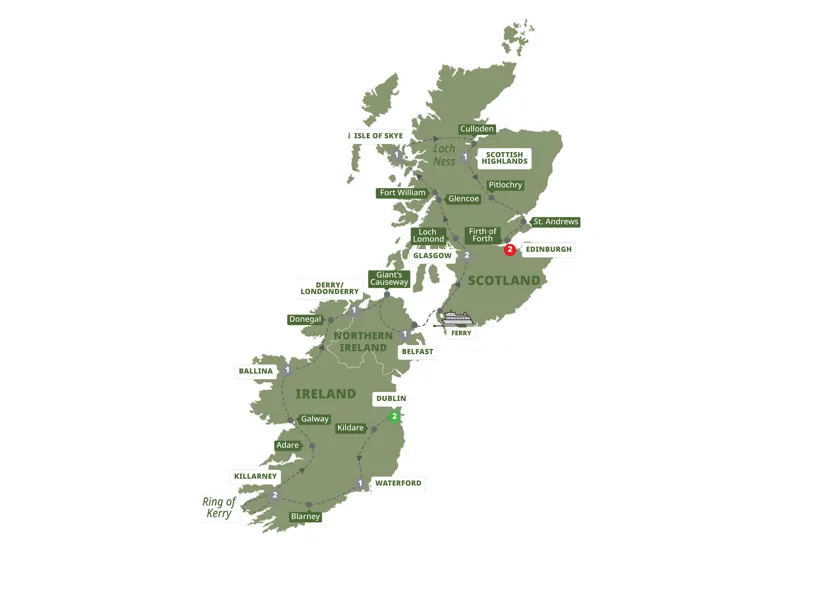See the iconic Edinburgh Castle and walk within its walls to view the Scottish Crown Jewels, Stone of Destiny, and Mons Meg.
The History of Bagpipes in Scotland
Origins & Cultural Significance

Bagpipes have a long and storied association with Scotland, where they hold a special place in the nation's culture and history. Known for their haunting sound and deep connection to Scottish identity, the bagpipes have transcended their original purpose to become a symbol of Scottish heritage recognized worldwide. However, their origins stretch far beyond Scotland, with a rich history that spans continents and centuries.
What are Bagpipes?
Bagpipes are a type of aerophone, a wind instrument that produces sound by forcing air through reeds. The structure of the bagpipes typically includes a bag made from animal skin or synthetic material, a chanter for melody, drones that provide a continuous harmonic sound, and a blowpipe or bellows to supply air. The unique, droning sound of the bagpipes is created as the player squeezes the bag to push air through the pipes.
Origins of Bagpipes Globally
Though bagpipes are most strongly associated with Scotland, similar instruments can be found in ancient civilizations worldwide, including Egypt, Greece, and Rome. It’s believed that bagpipes were developed independently in various cultures, with the first examples dating as far back as 1000 BC. The Roman Empire is thought to have played a key role in spreading the instrument throughout Europe, and this may have paved the way for its eventual arrival in Scotland.
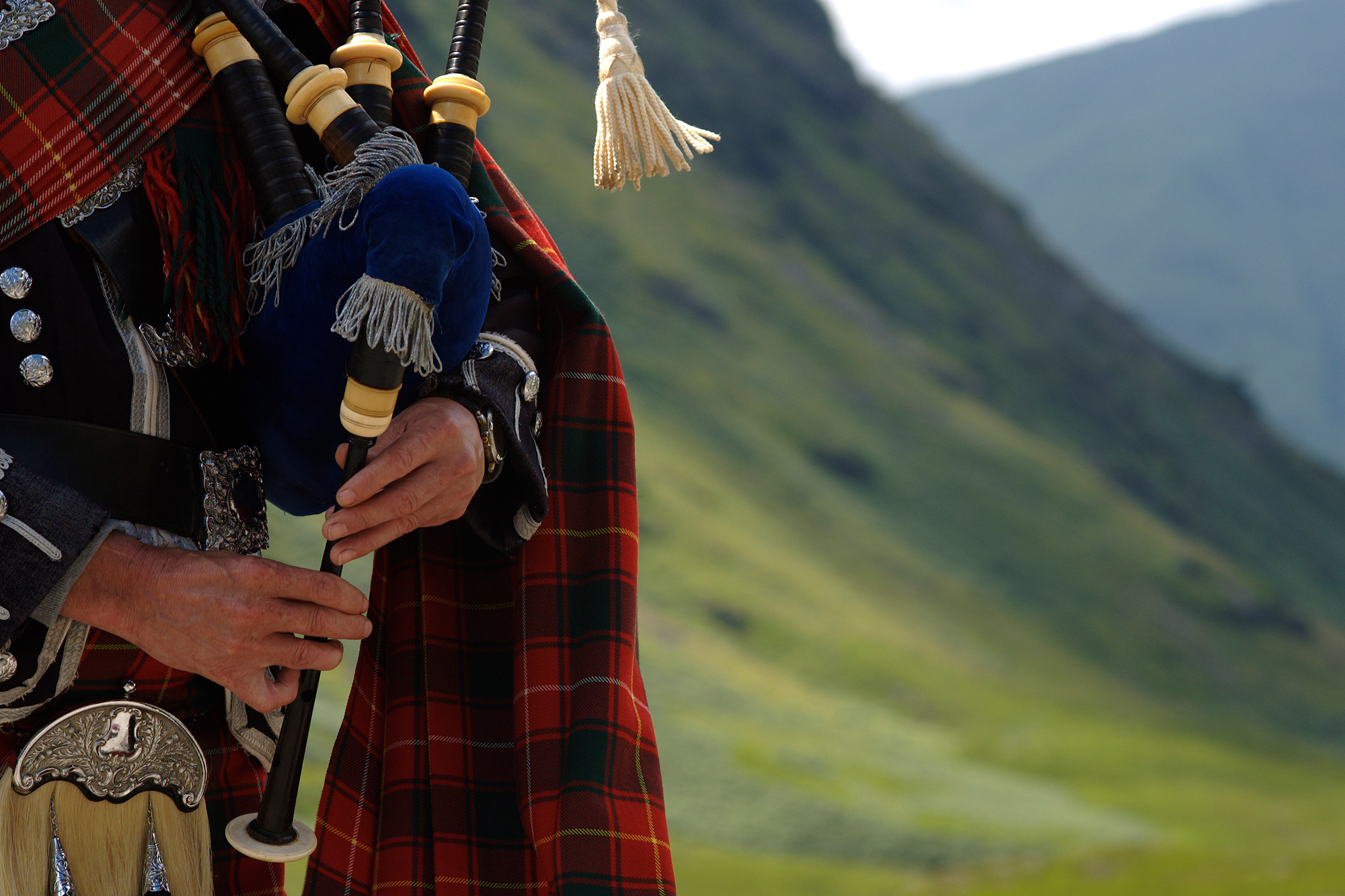
Early History of Bagpipes in Scotland
The Arrival of Bagpipes in Scotland
It is difficult to pinpoint the exact timeline of when bagpipes arrived in Scotland, but many historians suggest that they appeared during the 13th or 14th centuries. Some theories suggest that returning Crusaders brought the instrument to Scotland, while others posit that Norse invaders or Roman legions may have introduced it during their occupations.
By the Middle Ages, the bagpipes had become ingrained in Scottish culture. They were often played at feasts, fairs, and gatherings. Their portability and ability to produce loud, stirring sounds made them ideal for outdoor events, and they began to replace the harp as the preferred instrument in many aspects of Scottish life.
The Bagpipes’ Role in Medieval Scottish Culture
In medieval Scotland, bagpipes played an integral role in both rural and urban settings. Whether accompanying dances or marking important life events, they were an instrument that brought communities together. They were especially prominent at weddings, festivals, and funerals. Over time, the bagpipes began to take on a significant role in Scottish ceremonial traditions, becoming synonymous with the nation's identity.
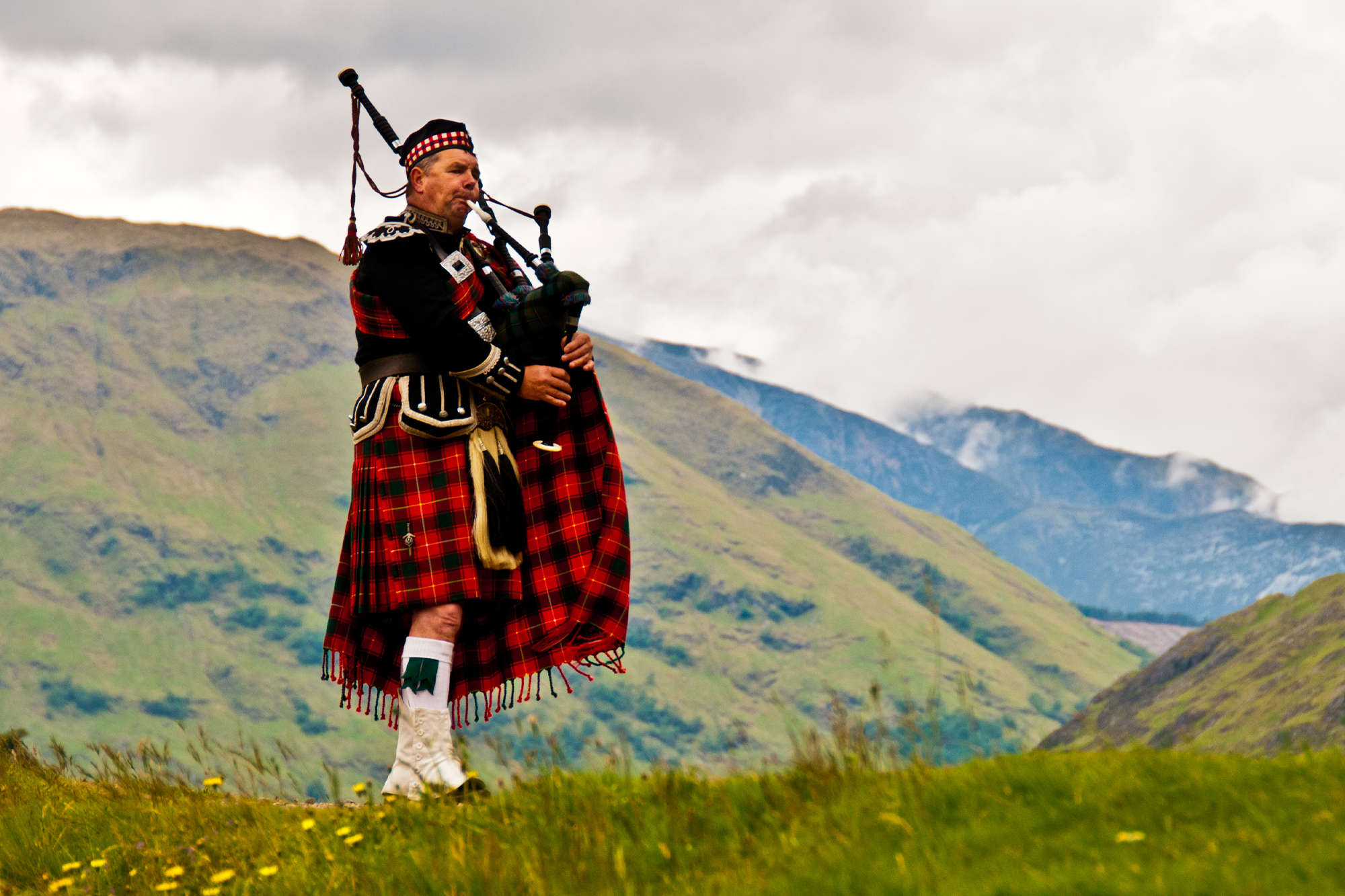
The Evolution of Scottish Bagpipes
Development of the Great Highland Bagpipe
One of the most iconic developments in the history of Scottish bagpipes is the creation of the Great Highland Bagpipe. This particular style, which emerged in the 16th century, features a larger and more complex design compared to its predecessors. The Great Highland Bagpipe became the dominant form of the instrument in Scotland and played a crucial role in the country’s military and cultural life.
The Highland bagpipes are known for their three drones (two tenor drones and one bass drone) and a melodic chanter, which gives the instrument its characteristic sound. Over time, the construction and tuning of the bagpipes improved, allowing for greater musical complexity.
Innovations in Bagpipe Design and Sound
As bagpipes evolved, pipers began to experiment with different designs and materials. The addition of multiple drones and improvements in reed-making technology allowed players to achieve more refined sounds and better control over the instrument. Over the centuries, the art of playing the bagpipes became increasingly sophisticated, with highly skilled pipers developing complex and stirring tunes.
Bagpipes in Scottish Society and Culture
Bagpipes and Clan Identity
Bagpipes were closely tied to the clan system in Scotland. Each clan had its own piper, and the instrument was often played at important clan gatherings and celebrations. This deep connection between bagpipes and clan identity helped the instrument flourish in the Scottish Highlands, where it became a powerful symbol of unity and pride.
Bagpipes in Scottish Celebrations and Ceremonies
Beyond warfare, bagpipes have long been associated with major Scottish celebrations and ceremonies. Whether played during weddings, funerals, or state occasions, the sound of the bagpipes has the ability to convey a wide range of emotions—from joy to solemnity. The instrument continues to feature prominently in events like the Highland Games, Burns Night, and Hogmanay (New Year’s Eve) celebrations. Few places evoke the grandeur of Scottish history quite like Edinburgh Castle, and no event exemplifies the tradition of the lone piper more than the Edinburgh Military Tattoo.
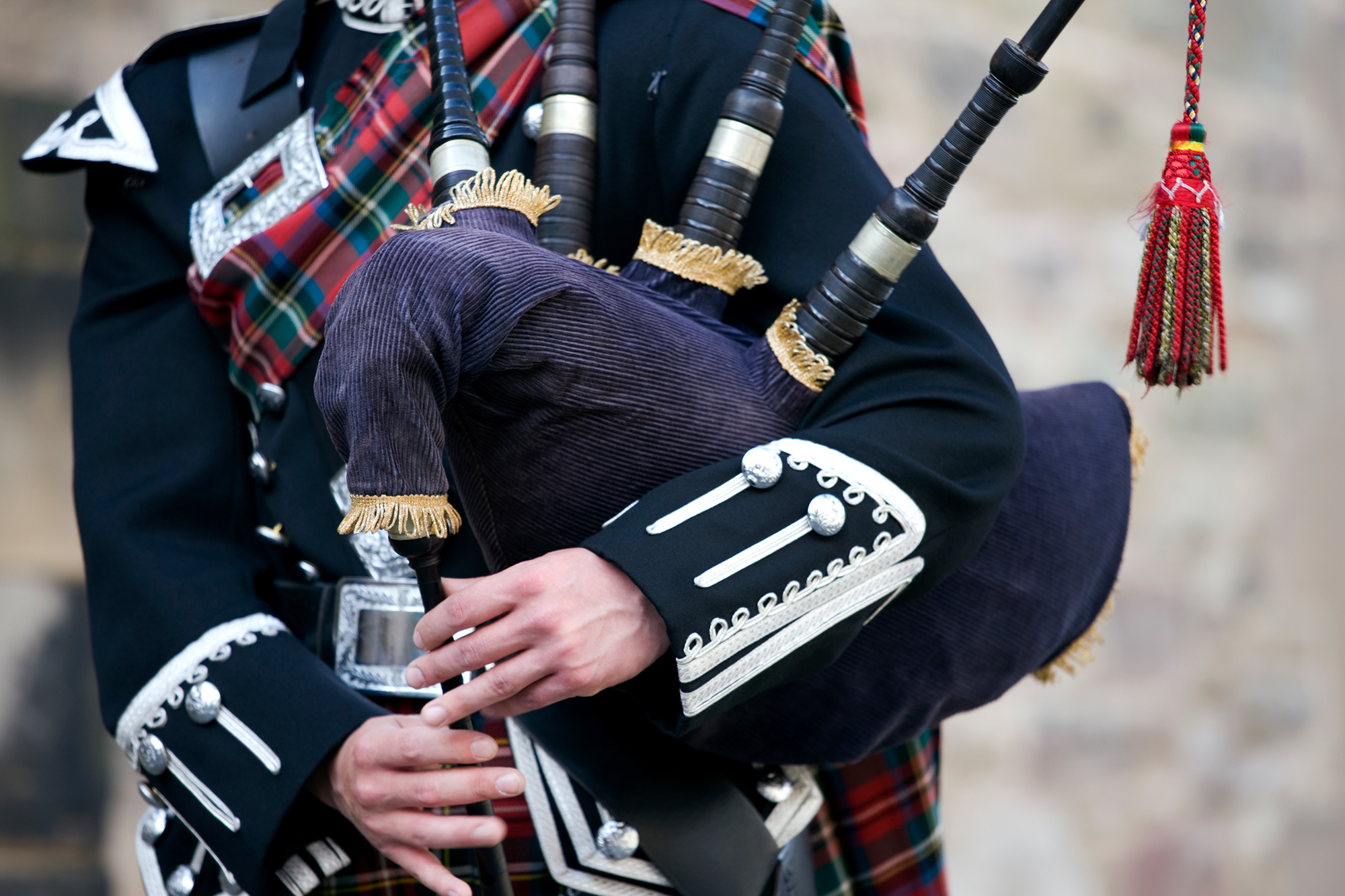
The Story of the Lone Piper
The story of the Lone Piper is one steeped in Scottish folklore and mystery, connected to the many underground tunnels beneath Edinburgh Castle. According to legend, many years ago, a network of tunnels was discovered beneath the castle, leading to the nearby Royal Mile. To explore the tunnels, a young piper was sent in, instructed to play his bagpipes as he walked so that those above ground could track his progress. As he ventured deeper into the tunnels, the sound of the pipes slowly faded, eventually stopping altogether. A search party was sent, but the piper had vanished without a trace. Though he was never found, the legend says that on quiet nights, the faint sound of bagpipes can still be heard beneath the streets of Edinburgh, believed to be the ghostly echo of the Lone Piper who never returned. Today, the Lone Piper is an important symbol in Scottish culture and is featured prominently during the Royal Edinburgh Military Tattoo, where a piper stands in solitude on the castle walls, honoring the enduring spirit of Scotland.
Learn More About the Lone Piper's Story
Bagpipes in Scottish Warfare
Bagpipes as Instruments of War
Bagpipes became more than a musical instrument in Scotland; they transformed into a tool of war. The loud, piercing tones of the bagpipes were used to rally troops, signal commands, and intimidate enemies. This association with warfare began in the late medieval period and continued through the 18th century. Pipers accompanied Scottish troops into battle, providing a rhythmic and motivational backdrop to the chaos of war. The distinctive sound of the pipes was meant to inspire soldiers and demoralize the opposing side.
Role of Bagpipes in the Jacobite Risings
The Jacobite Risings in the 17th and 18th centuries were significant historical events in which the bagpipes were heavily used in combat. The risings, which sought to restore the Stuart monarchy to the thrones of England and Scotland, were led by Highland clans, who used the bagpipes both to signal maneuvers and to lift the spirits of their fighters.
Following the defeat of the Jacobites at the Battle of Culloden in 1746, the British government sought to suppress many aspects of Highland culture, including playing the bagpipes. However, the instrument's role in war had cemented its place in Scotland's national identity.
Decline and Revival of the Bagpipe Tradition
The Suppression of Bagpipes Post-Culloden
After the Jacobite defeat in 1746, the British government sought to dismantle the culture of the Highlands, which they viewed as a source of rebellion. The Act of Proscription in 1747 banned many elements of Highland life, including the wearing of tartan and the bearing of arms. While bagpipes were not explicitly banned, their role in warfare made them a target for suppression. Pipers were often viewed with suspicion, and their instruments were sometimes destroyed.
The Revival of Bagpipes in the 19th Century
Despite the setbacks of the 18th century, the 19th century saw a revival of bagpipe music in Scotland. The Romantic movement, with its emphasis on national identity and heritage, helped to rekindle interest in traditional Scottish culture, including bagpipes. This period also saw the rise of formalized piping competitions and the establishment of the Highland Society of London, which helped to preserve and promote bagpipe music.
The revival was further aided by Queen Victoria’s love of Scotland and the Highland culture. Her patronage of Scottish traditions, including bagpipes, played a role in their resurgence.
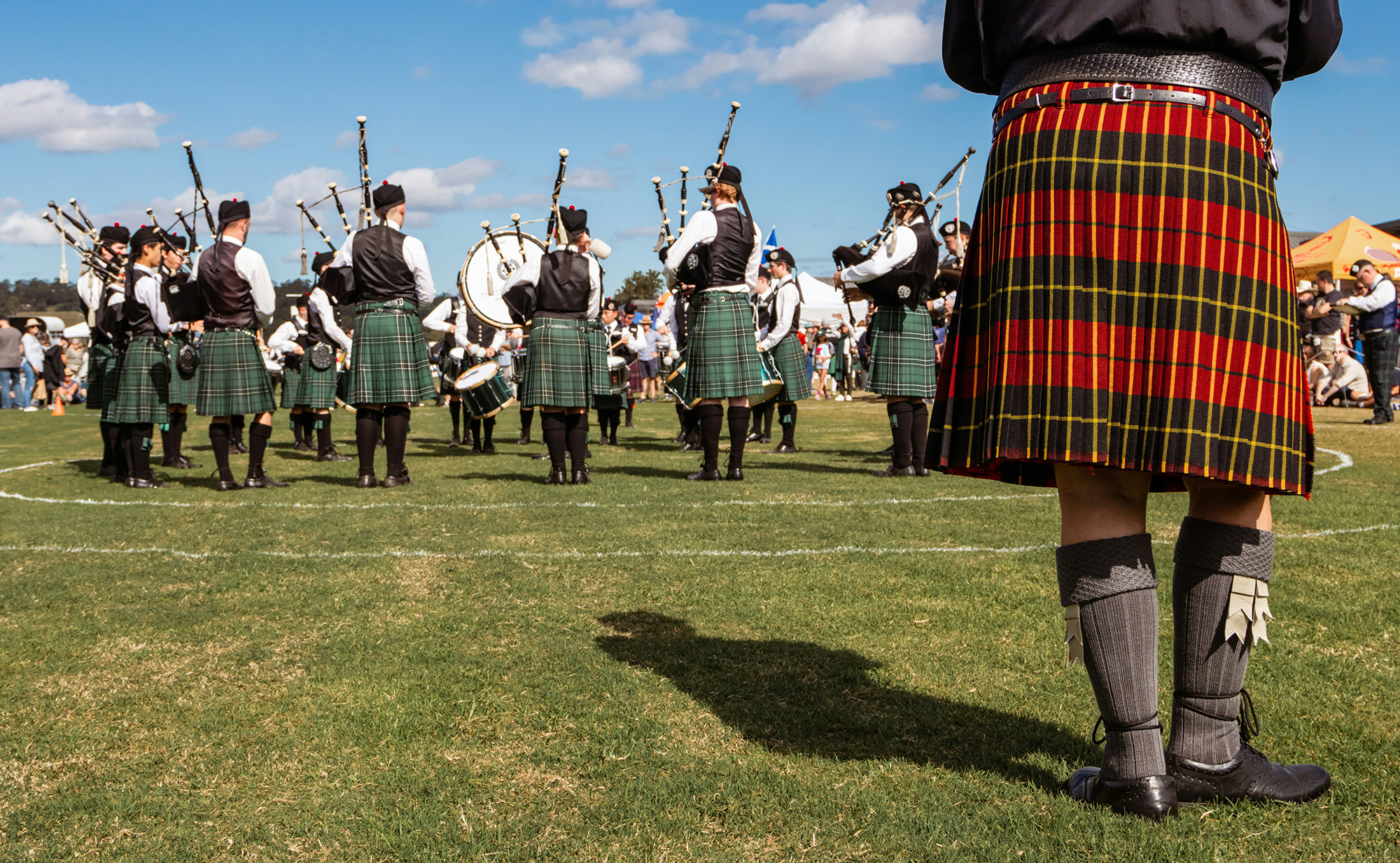
Modern Day Bagpipes in Scotland
The Role of Bagpipes in Contemporary Scottish Culture
In contemporary Scotland, bagpipes remain a symbol of national pride. They are played at major events such as royal ceremonies, military parades, and cultural festivals. Pipers are also a common sight at traditional Scottish weddings and funerals, where the sound of the bagpipes provides a poignant backdrop.
Bagpipe Competitions and Festivals
Bagpipe competitions have become a key feature of Scottish musical life. Events like the World Pipe Band Championships and the Edinburgh Military Tattoo attract top pipers from around the world, showcasing the talent and tradition that continue to thrive in Scotland. These competitions have helped to push the technical limits of the instrument, with players performing increasingly complex and challenging pieces.
The history of bagpipes in Scotland is a journey through centuries of cultural, military, and artistic development. From their origins in medieval Scotland to their modern-day revival, the bagpipes have become an enduring symbol of Scottish identity. Their distinctive sound, rich history, and ongoing cultural significance ensure that the bagpipes will continue to play a central role in Scottish life for generations to come.
Frequently Asked Questions about Bagpipes in Scotland
While the exact date is unknown, bagpipes are believed to have arrived in Scotland during the 13th or 14th century, possibly brought by Crusaders or Norse invaders.
No, bagpipes have existed in many cultures, but the Great Highland Bagpipe is the version most strongly associated with Scotland.
The most common type is the Great Highland Bagpipe, but there are also other varieties, such as the Border pipes and Scottish smallpipes.
Bagpipes were used in Scottish warfare to rally troops and signal commands, particularly during the Jacobite Risings.
Bagpipes can be challenging to master due to their unique air control requirements and the coordination needed between the chanter and drones.
Due to their use by Scottish immigrants and expatriates worldwide, bagpipes have influenced military music, folk traditions, and even modern genres like rock.




